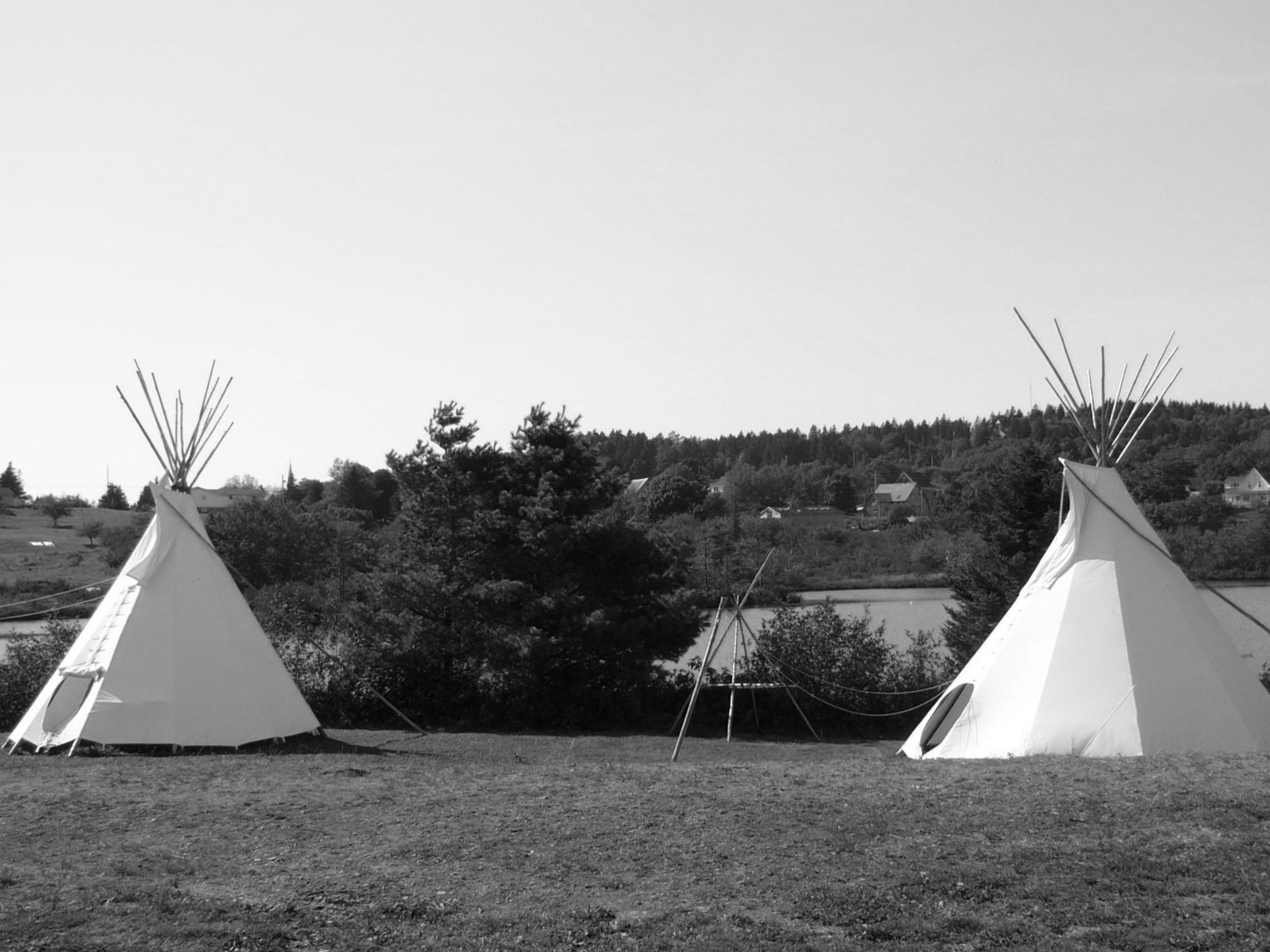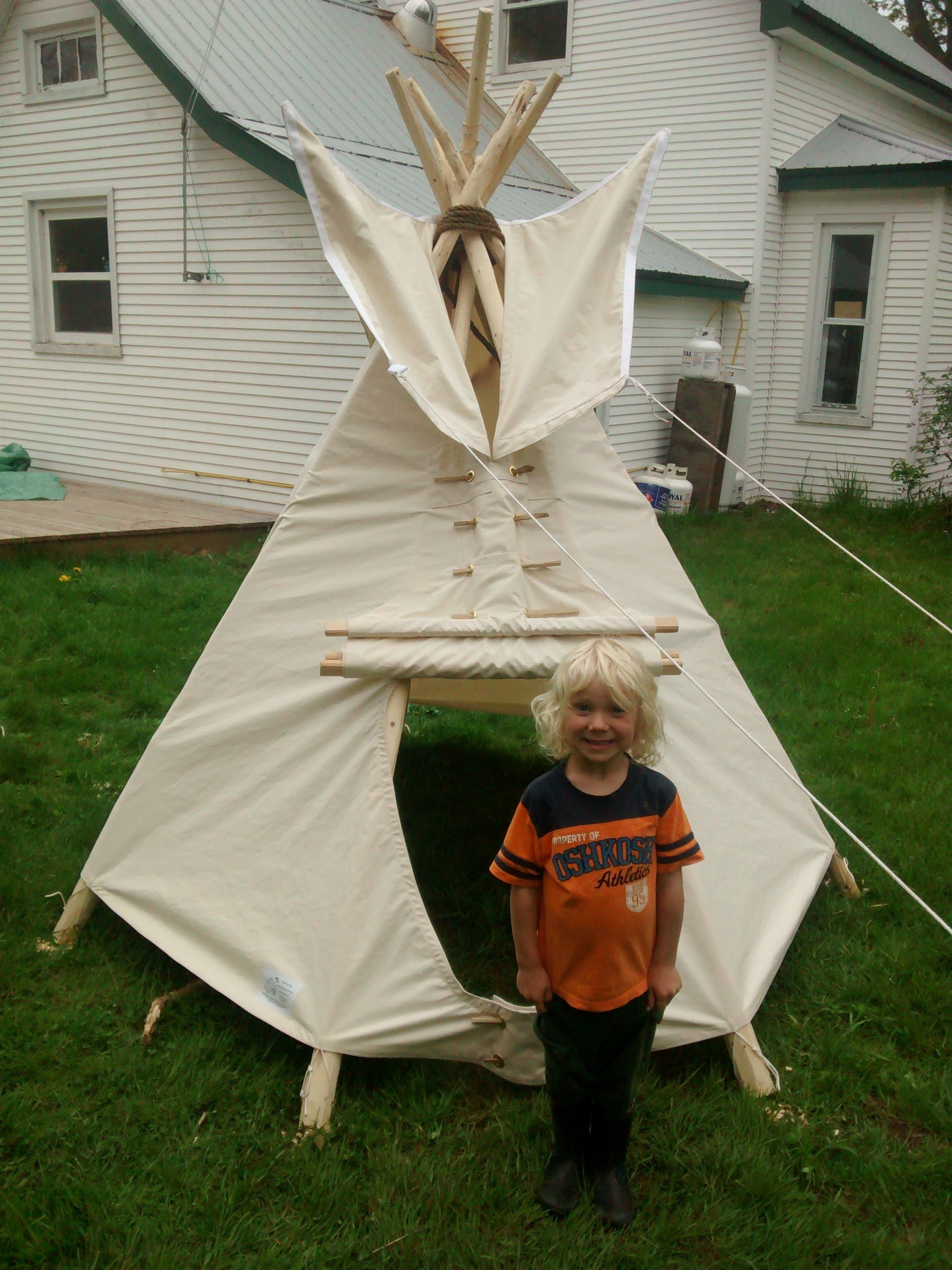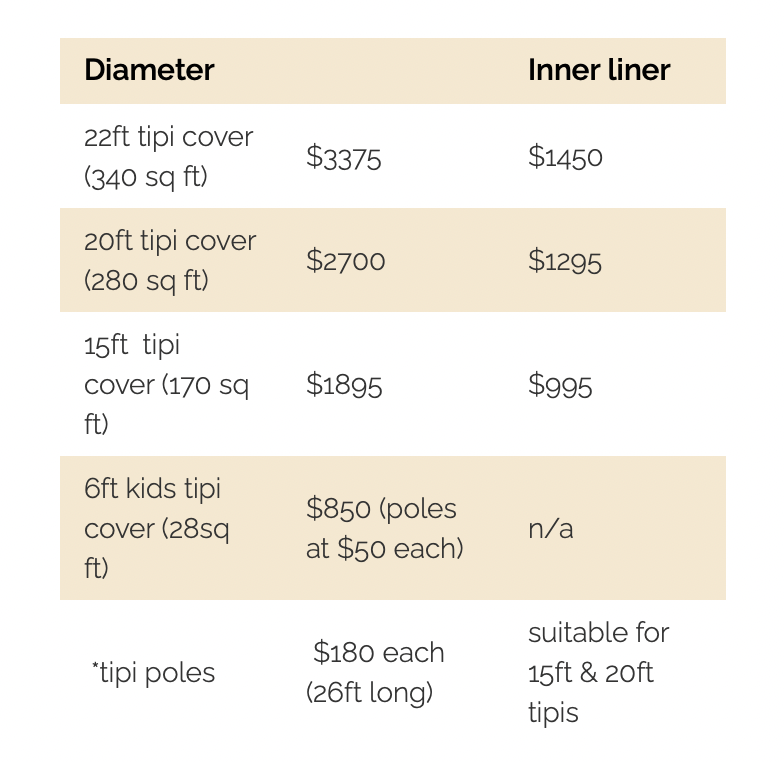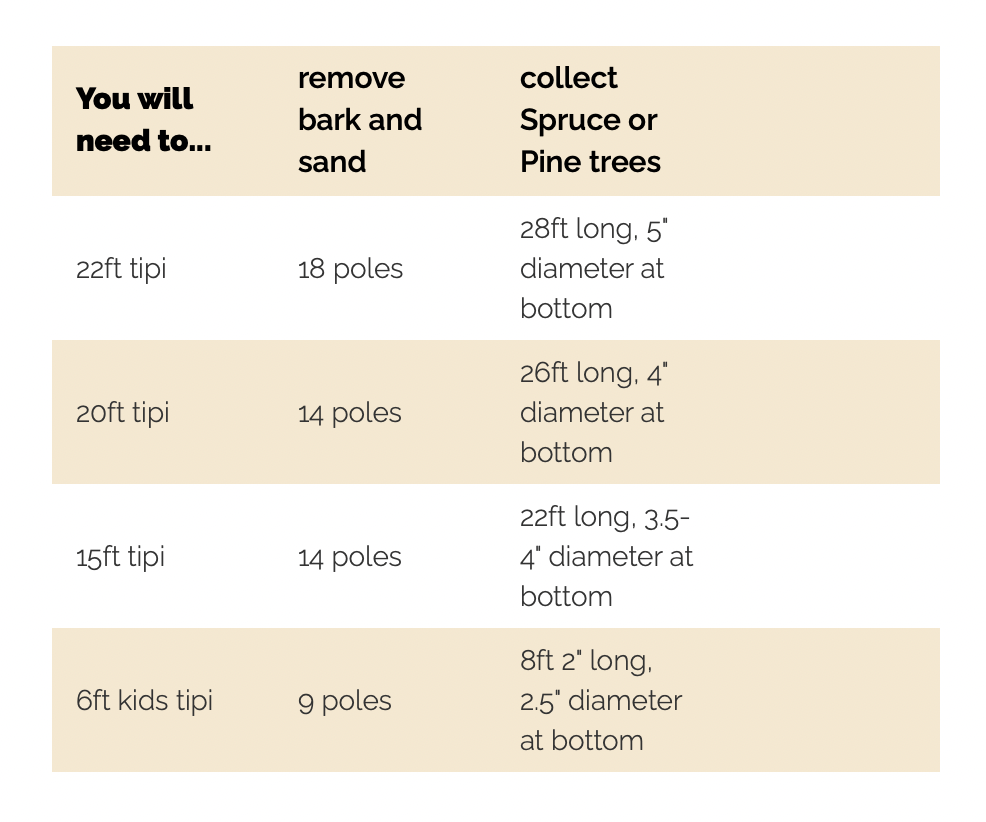
Tipi Sales
All about our Tipis
Operating in Mi’kma’ki, the traditional territory of the Mi’kmaq people, our work is deeply influenced by the First Nations of Turtle Island and the nomadic communities of Central Asia. As non-indigenous individuals, we approach crafting yurts and tipis with profound respect for the cultures that have nurtured these shelters for generations.
Our love for yurts and tipis stems from their practical brilliance and the profound sense of spiritual connection they evoke when we're inside. A canvas covered tipi was our first home as a married couple in the beautiful woodlands of Wales. There we learned the textile skills and worked with an industrial sewing machine to make a tipi covering. From Celtic roundhouses to tipis and yurts, we appreciate the grounding feeling of circular shelters and their enduring design.
Crafting canvas coverings for Sioux-style tipis, we acknowledge the traditional Mi'kmaq home, the wigwam, and its significance. The term "tipi" wasn't used by the Mi'kmaq, and birchbark, not skins, covered their dwellings.
Today, tipis serve diverse purposes, from special events to camping and historical displays. Our tipis, slightly adjusted for enhanced durability, withstand harsh weather. Ranging from a 6ft kids tipi to a 22ft version, they offer versatile spaces for various gatherings. The traditional design has been reinforced to ensure longevity, making our tipis exceptionally resilient in adverse conditions.
Our inner liners feature a rot-proof base and spacious pockets on smoke flaps for pole fitting. Enhanced with grommet-reinforced dowel holes and nylon loops to prevent bottom rot.
Tipi Cover Prices
Our tipi covers include the pegs, smoke flap ropes, anchor rope, wooden lacing pins, a canvas storage bag, tipi door and a set up guide with pictures. A 50% non-refundable deposit is required to start all orders.
We have a limited amount of tipi poles in stock. New tipi poles get cut every March. To confirm tipi poles, a deposit is required before February.
The inner liner is ideal if you will be using it for accommodation as it prevents drafts and provides a more comfortable space.
Collecting your Own Tipi Poles
As for acquiring your own tipi poles, we recommend finding poles locally utilizing someone in your community with forestry knowledge.
Our advice is to find an overcrowded stand of spruce trees around 2 ft apart. Taking trees from this area will leave a healthier stand afterwards. The crowded spruce stand will have lots of very straight trees that are tall without too much girth at the base.
Cut and remove 14 trees that are around 3.5-4 inches at the base and still 1.25 inches at the top over 22-28ft long depending on the size of tipi. These trees are best taken between November and February as they will be less sappy and dry better.
-
The poles should be plained with an electric hand planner or by using a rasp to smooth out any lumps or knots on the trunk. Once all the hard lumps and knots are removed, shave the bark off with a draw knife, log stripper or machete until it is smooth with no cambium or bark.
The finished poles should be stored upright until dry or until you are ready for set up. The poles can be left untreated but for a better look and longer lasting pole, treat the poles with a transparent deck stain or linseed oil.
-
We use an Egyptian double weave cotton canvas called Sungorger FR (10.5oz). It is the best quality cotton canvas on the market today. It is tested to Canadian fire codes CPAI 84 and S109 ULC. It is a treated canvas, which is rot, mildew, water, fire, and UV resistant. The treatments are very necessary in damp and cold climates like we have in Nova Scotia.
The life of a cotton tipi cover depends on many factors. If you use it seasonally (spring, summer and fall months) take the cover off when high winds and storms are expected. Store the cover in a clean and dry manner and brush the debris off the canvas as required, then your cover could last between 7-10 years.
It is also important to ensure that your tipi poles are smooth which will prevent unnecessary wear on the canvas. Putting your tipi on a deck will increase the dryness of your shelter and the longevity of the canvas.
-
A set up guide with pictures is included in the above prices. If you require set of your tipi for the first time we offer face-to face training and set up for $350.
Delivery charges are not included. Our travel costs are $1.25 per kilometer in Nova Scotia (round trip) and $1.35 per kilometre in Cape Breton, NB & PEI (round trip). Due to unpredictable fuel prices, travel costs are subject to change without notice.
View our Tipis
What People Are Saying about our Tipis
“The tipi I purchased from Little Foot Yurts is one of the best I have seen, and certainly the best I have owned. They have incorporated the best features that I have noticed, including large smoke pole pockets (to assist in getting the poles in place from far below), offset lacing holes for joining the tipi cover neatly (this is not so on all tipis), and heavily reinforced stress points and seams. They also provide heavy duty rebar pegs, more like staples, that do a terrific job of making sure your tipi doesn't get airborne. The instructions they provide make it almost foolproof to get the tipi up and looking good in minimum time. All in all, a wonderful purchasing experience, and an awesome product!”
- Dan McIsaac, owner of a 20 ft tipi, Annapolis Royal, NS
“The Lunenburg County Historical Society purchased 2 tipis from Little Foot Yurts as part of our Renaissance Project. Alex and Selene personally delivered them to the Fort Point Museum in LaHave and demonstrated how to set them up. Over the years we have used the tipis as living exhibits at the museum site, as well as for story telling, and craft demo's at the 'Acadian-Mi'kmaq', and 'LaHave Folk' festivals. They are very popular with both young and older visitors to the site, who often enjoy picnics inside them. We have been very pleased with the quality of the tipis, and with the personal service provided by Selene and Alex, whether it was to assist with setting up, taking down, or repairing a tear.”
-Gary Malone, Lunenburg County Historical Society, NS
“Our school has a tipi from Little Foot Yurts and we use it as a resting station while students enjoy the warmth of the fire pit, after walks and snow shoeing. We are very impressed that it has withstood the cold harsh winds, snow and freezing rain.”
-Brain Wong, Principal of West Hants Education Centre & Windsor Adult High School


















